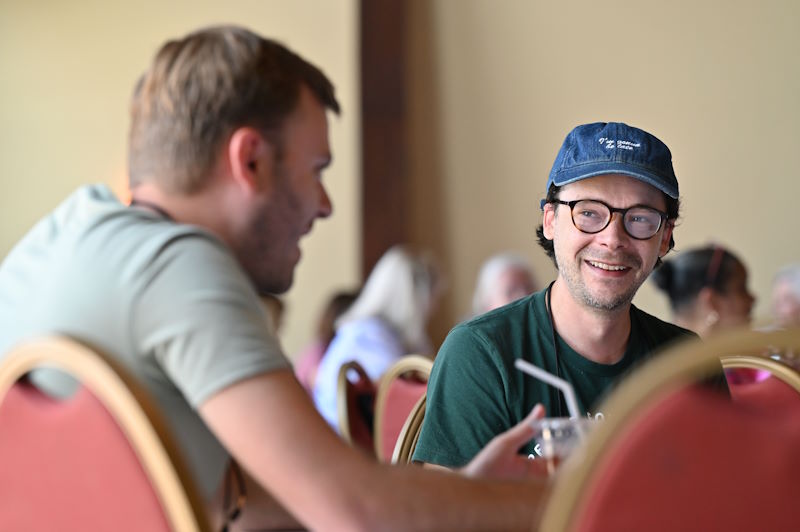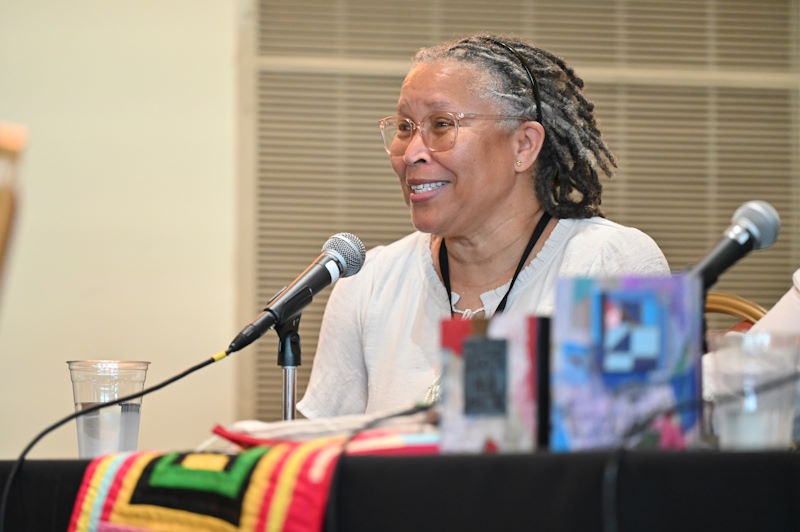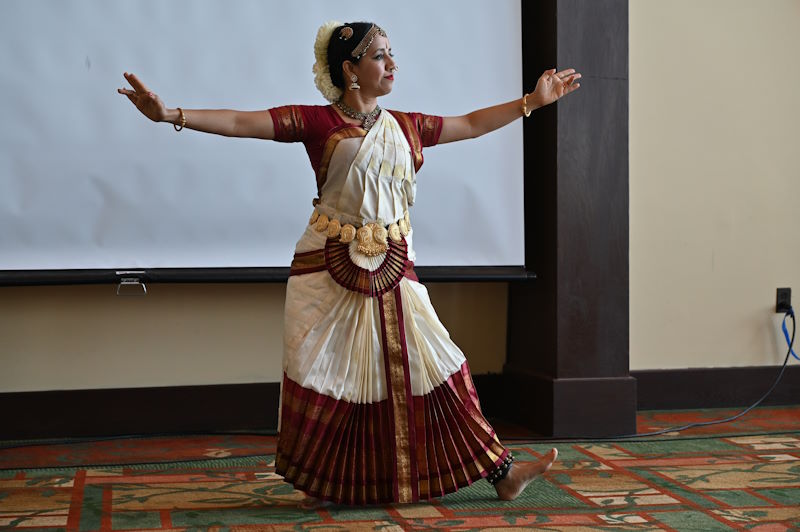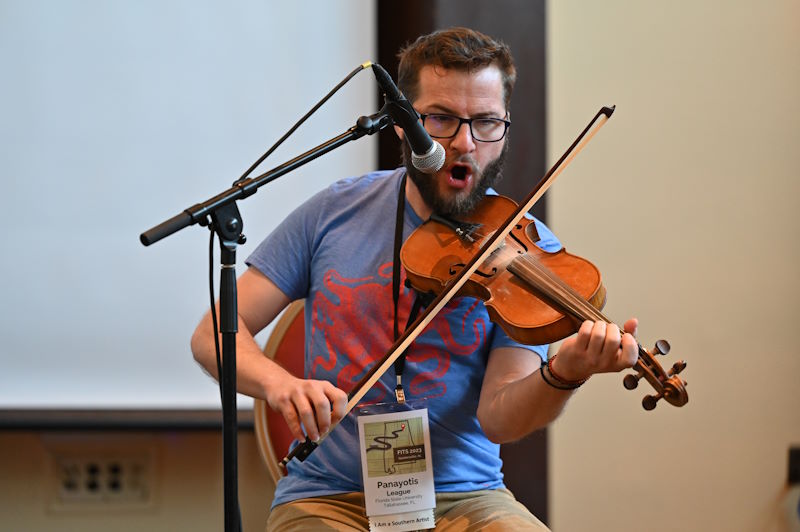In June 2023, South Arts gathered hundreds of people from different areas of the folklife community in Lake Guntersville, Alabama, for the 2023 Folklife in the South gathering. Teresa Hollingsworth, South Arts' Director of Traditional Arts, reflects on what this convening meant for everyone involved.

socializing between sessions.
For the interview, could you briefly introduce yourself and your role at South Arts?
My name is Teresa Hollingsworth. I'm the Program Director for Traditional Arts at South Arts.
What exactly is Folklife in the South?
Folklife in the South is a gathering where we invite traditional artists, arts administrators, educators, students, graduate students, and anyone working in the humanities, creative placemaking , and the arts to join us for three days of discussions, panels, workshops, and networking opportunities, specifically looking at traditional arts in the South. We have people from all over the country come to see us. We always meet in a rural community, so it's a great chance for people to just get away and increase their networks. But it also allows them to learn about how we are helping advance folk and traditional arts in the South and how people can take those lessons learned back to their own organizations, whether they be in Birmingham, Alabama, or in Seattle, Washington. Everyone is welcome to join us at FITS.

about Alabama's textile traditions.
You mentioned that FITS is always hosted in a rural community. This year’s convening happened in Lake Guntersville, Alabama. Was there a particular reason that you were drawn to host in Lake Guntersville?
There were several reasons. First, we had actually met before in Guntersville, Alabama 34 years ago in 1989. It was a great opportunity to go back to that community. We also were thrilled to work with several partners in Alabama, including the Alabama State Council on the Arts and the Alabama Folk Life Association. Our third partner was the American Folklore Society, which is a North American learned society. Through our partners, we could have the international, regional, and state perspective. That's one of the reasons that we chose Guntersville. Another is that they have a beautiful state park there, and the state park system is fantastic to work with. It was a beautiful, tranquil physical setting for us to meet in.

demonstrating a Bharatanatyam dance.
I’ve seen the pictures from the gathering – it looked so serene. The theme for FITS this year was “Folklife in a Textured World”. Would you mind explaining how this theme was derived?
This theme requires a little bit of background information. Alabama has a rich history of not only the textile arts, but also the textile industry . A lot of people don't know that several generations of Alabamians have made their livelihoods through textile mills. When we were talking with our partners, we talked about how in Alabama, there are textiles and then there is texture. And really, not only in Alabama, but in the entire region of the South. There are many different layers, to individuals, to families, to communities, to states, to countries, to regions, and we really started to look at how those different textures continue to evolve through folklife.

Greek music traditions of Florida's Gulf Coast.
Was this the first in-person gathering since the pandemic? How was the transition back in-person?
It was. I was flabbergasted by the interest and the enthusiasm from registrants and participants. People really could not wait to meet in-person. This year, we even had to cut registration off because we literally had nowhere for people to sleep. We had used all the rooms in the cabins that we had booked at the State Park and at the overflow hotel. But it was a good problem to have. And people really seemed to enjoy this year’s gathering. We got a really astounding amount of positive feedback about the gathering afterwards. It was wonderful to see.
Could you talk a little bit more about what education FITS offers to participants and how those contribute to cultural preservation and understanding in the South?
You know, I think education is one of those things that we’ve always tried to focus on during FITS. There are so many stereotypes about the South in general and certainly about the region. Those stereotypes often extend to people’s thoughts about folk and traditional arts. A lot of people think about art in the South and might only think about quilting and assume it’s only white people who quilt. Knowing this, one of the things that we always strive to do is to illustrate the diversity and deep history of the traditional arts in our region. I mean, look at the deep-rooted traditions of Latino and Black communities in the South. We also have a very deep-rooted Vietnamese community. Different people come here for different reasons. But when people move, they bring their traditions with them. They bring their faith, their food, their art, their family traditions, and then they plant those seeds in the South and flourish. With Folklife in the South, we show that it's just not one group of people doing one type of traditional art. It's an important way of highlighting how diverse our region actually is. It's wonderful to see how things evolve, and how different communities impact one another in positive ways. I think that’s one of the great things about this convening.